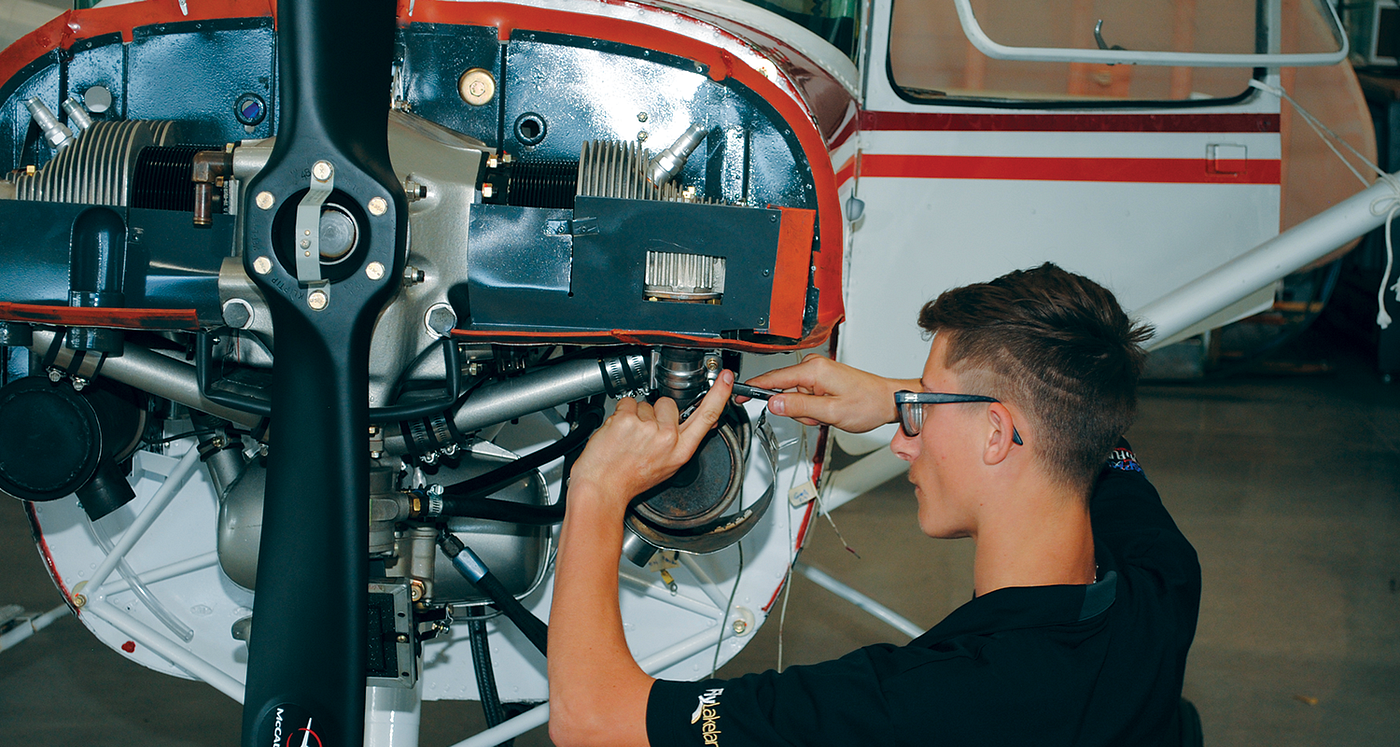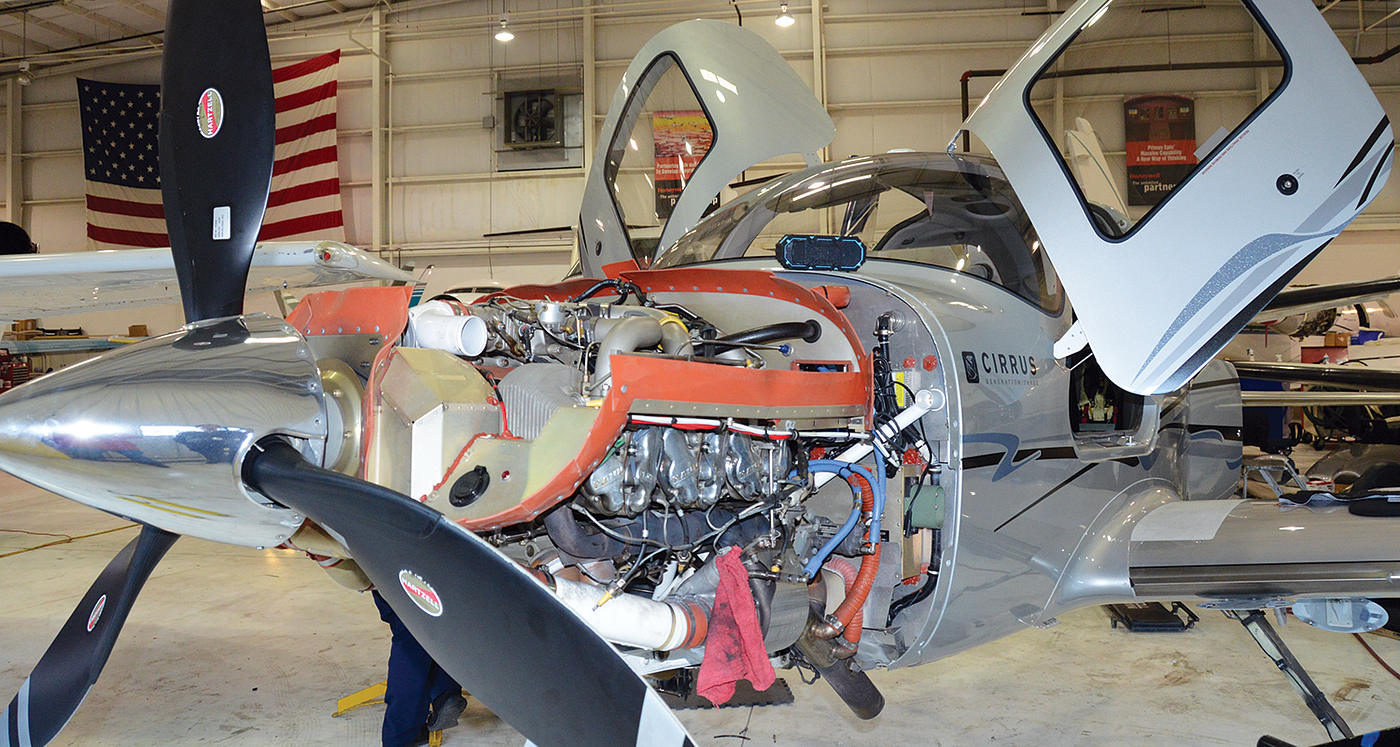Editors Note: This article originally appeard in the November 2022 issue of FAASafety Breifing. Since publication, the new standards went into effect in August of 2023.
By Tom Hoffmann, FAA Safety Briefing Magazine Managing Editor
By now you’ve likely heard about the FAA’s changes to part 147 regulations for aviation maintenance technician schools (AMTS). But do you know what exactly the rule changes and how that might affect you as either a prospective aviation maintenance technician candidate or training provider? Let’s take a look at the revised regulation and see what impact the new changes will have on the aviation maintenance industry.
The new part 147 rule — save for a few amendatory instructions we’ll cover later — went into effect on Sep. 21, 2022. Although an FAA rulemaking effort was already underway, Congress directed the agency in December 2020 to publish interim final regulations for new AMTS requirements under Section 135 of the Aircraft Certification, Safety, and Accountability Act.

Photo by Paul Cianciolo
WHAT IS PART 147?
In general, the part 147 regulations lay out specific requirements an AMTS must meet in order to provide aviation maintenance training that is designed to qualify someone for a mechanic (aka, AMT) certificate with airframe and/or powerplant rating. Those requirements cover four main areas:
- The facilities, materials, and equipment appropriate to the AMTS
- A provision for an adequate number of qualified instructors
- Quality control procedures (attendance, records, etc.)
- The curriculum
We’ll first look at the curriculum since this was the focal point of the proposed regulation change. An AMTS curriculum shows what the school will train its students on, so they will have the knowledge and skills to be prepared to test for a mechanic certificate. Under the previous regulation, AMTSs needed to have their curriculums approved by the FAA and were required to include the subject areas and course content items found within the part 147 appendices. However, mechanic applicants were then tested using the Mechanic Practical Testing Standards (PTS). This resulted in differences between the curriculum standard and the testing standard, which was confusing to AMTS and mechanic applicants alike.
ACS ALIGNMENT
Under the new rule, AMTSs can create their curriculum without the need for FAA approval, provided it still meets the regulatory requirements of subject areas and skill training. The guiding document for developing the curriculum is now the Mechanic Airmen Certification Standards (ACS). The ACS is the new and more comprehensive testing standard that has already replaced the Practical Test Standards (PTS) for several airmen certificates. The Mechanic ACS includes high-level subject areas and standards with which the curriculum must now align. The FAA developed the ACS in cooperation with an industry working group established under the Aviation Rulemaking Advisory Committee (ARAC). The goal in creating the ACS was to drive a systematic approach to the airmen certification process, including knowledge test question development and conduct of the practical test. Part 147 references the ACS and provides a link to where it can be found (see Learn More section below).
Regarding those amendatory instructions mentioned earlier, the incorporation by reference of the mechanic ACS is echoed in 14 CFR part 65, which covers the knowledge, experience, and skill requirements for AMTs. However, to accommodate AMT applicants who prepared under the old curriculum requirements and the PTS, the FAA will not begin using the ACS as the testing standard until after July 31, 2023. Until then, the Mechanic PTS will continue to be used for anyone testing for a mechanic certificate or added rating. This schedule also provides time for AMTSs to begin preparing students using the ACS as the curriculum standard.
So what exactly does all of this mean? Bottom line is that as of Sep. 21, 2022, AMTSs began using the ACS as the training standard, and beginning Aug. 1, 2023, the FAA will begin using the ACS as the testing standard for anyone who tests for a mechanic certificate.

CUSTOMIZE AND OPTIMIZE
Another significant change is that the new regulation does away with the minimum time-based requirements (previously 1,900 hours for both an airframe and powerplant certificate). Instead, the new rule allows for a more flexible, performance-based standard. It also allows the AMTS to develop a curriculum that is more suited to that particular school and does not preclude the school from including additional course content beyond what’s in the ACS. Please note that a compliant AMTS curriculum still needs to include the high-level subject areas listed in the Mechanic ACS, as well as the broader course content items, concepts, and practical projects under each high-level subject.
The AMTS community has applauded the new rule and believes it provides the opportunity to modernize and reorganize curriculum requirements with much needed flexibility in subject matter selection and instruction delivery methods. For example, an AMTS will no longer need to seek approval for a distance-learning training program; it would just need to be described in the school’s Operating Specifications (OpSpecs). While the FAA won’t approve an AMTS curriculum, schools will be held to what they develop in their OpSpecs and must adequately describe how they plan to develop and deliver their curriculum. Rather than the FAA telling the AMTS how to deliver the curriculum, the AMTS tells the FAA how it will deliver the curriculum to ensure the student has the knowledge and skills necessary for attaining a mechanic certificate and associated ratings. In addition, an AMTS must also provide a description of its facilities, equipment, and materials, as well as how it will provide the necessary qualified instructors.
ADDITIONAL CHANGES
It’s worth noting a few other changes to part 147 that provide some additional flexibility for an AMTS. For example, the change to section 147.15 allows an AMTS to provide training at any fixed location other than its primary location, including locations outside of the United States. This might be helpful for a school that is unable to teach a certain skill or subject, like welding, at its primary location, or allow an AMTS to partner with a high school to provide training as an additional location of the AMTS. The additional locations must meet all part 147 requirements and would need to have facilities, equipment, and materials appropriate to the curriculum and the number of students being taught at that location.
Also, instead of quality of instruction being based on a nationwide norm, AMTSs need to maintain a pass rate of at least 70% of students who took a written, oral, or practical exam within 60 days of graduation during a three-year reporting period. This change provides a standard that does not vary over time or depend on the performance of other AMTS.
The new 147 rule also requires that an AMTS have a quality control system by either being accredited, or by having an FAA-approved quality control system that contains specified procedures. However, accreditation must be by an accrediting agency that is recognized by the U.S. Department of Education. Since most AMTSs are accredited in this manner, this will relieve them from needing FAA approval of grading and attendance policies.
There’s added flexibility with instructor requirements too. AMTS instructors may be an FAA-certificated mechanic or be a “specifically-qualified” individual to teach a portion of the school’s curriculum. An AMTS will need to demonstrate that any non-certificated instructors are qualified to teach their assigned content. The 25:1 student-to-instructor ratio in shop/lab classes is retained, but the requirement that the one instructor in that ratio be FAA certificated was removed.
A GOOD STATE OF REPAIR
With 187 FAA-certificated part 147 programs that enroll approximately 20,000 students across the country, the improvements and regulatory relief provided by the new part 147 regulations are likely to have a widespread and lasting impact on the aviation maintenance community. Under the new rule, AMTSs will have a greater say in how and what they teach, and as a result will be better suited to meet the demands of the evolving aviation community. And with the ability to make training available in more places, AMTSs may also be able to expand enrollments and foster a much-needed growth of the aviation maintenance workforce.





